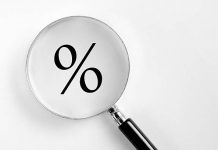I sense that the first quarter of this year will be marked by the realization that it’s too early for the central banks to cut the interest rates unless something really bad – like another bank crisis, or a real estate crisis, or another debt crisis hits the fan. Because March – where market prices reflect the first rate cuts from both the Federal Reserve (Fed) and the European Central Bank (ECB) – is about two months away, and things don’t look *that* bad.
In Europe, growth is slowing, Germany is struggling to reverse slow down, the slump in the Eurozone’s industrial production accelerated, and production fell 6.8% in November from a year earlier. Over the last 9 readings, only one came in positive, and it was a small 0.2% growth back in June. But economic slowdown is what the ECB needs to pull inflation lower. And unless there is a sharp slowdown in economic activity, the ECB won’t hurry up to cut rates. On the contrary, the bank is now focused on waning the pandemic era aid programs. And according to a recent Bloomberg survey, the ECB will make four 25bp cuts this year starting in June instead of six rate cuts starting from April – as priced in by the markets.
In the US, the resilient growth, healthy jobs market and sustained fiscal spending into the presidential election suggest no urge for a Fed cut in March.
The divergence between the reason and market pricing suggests that the rate cut expectations will be gently delayed and pricing will be revisited.
If that’s the case, stock and bond markets should correct to the downside, and the US dollar should recover.
Calling a spade, a spade
The US dollar kicked off this week on a positive note, as the EURUSD made a swift move to the downside following ECB Holzmann’s words in Davos yesterday. Holzmann warned that the threats from looming inflation will likely prevent the ECB from lowering the rates this year, even as a recession can no longer be ruled out. He pointed at the conflict in the Middle East as a risk for further disruption to supply chains and energy markets and cautioned that the latter developments will likely keep ECB alert regarding the price risks. The euro fell and the Stoxx 600 retreated.
One thing that prevents inflation worries from darkening the mood is the subdued reaction from oil markets. The escalation of the conflict in the Red Sea region no longer fuels oil prices. Despite news of further attacks and retaliation, US crude saw limited upside yesterday and closed the session slightly lower. Resistance remains intact into $75pb level.
But if inflation worries resurface, weak economic data will no longer fuel the central bank doves and act as good news.
The EURUSD has potential to fall further. The next natural target for the euro bears stands at 1.0875, the major 38.2% Fibonacci retracement on the latest rebound that started in October. Below this level, the EURUSD will step into the medium-term bearish consolidation zone. Cable could return below 1.25, and the USDJPY could make an attempt on the 100-DMA – near 147.40. But the consensus for the USDJPY remains bearish as the Bank of Japan (BoJ) should exit the negative rate policy. Japanese policymakers could be further encouraged to act in case of strong annual wage-negotiation results.












